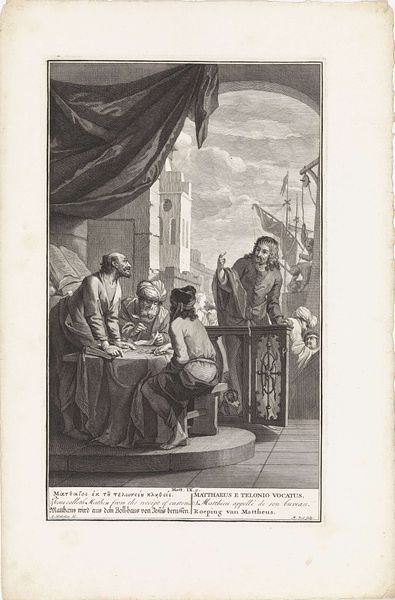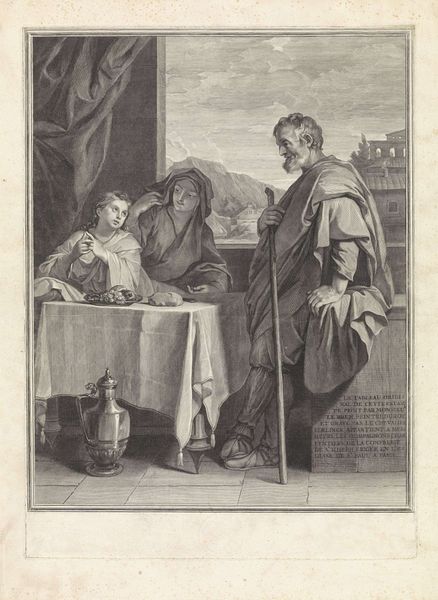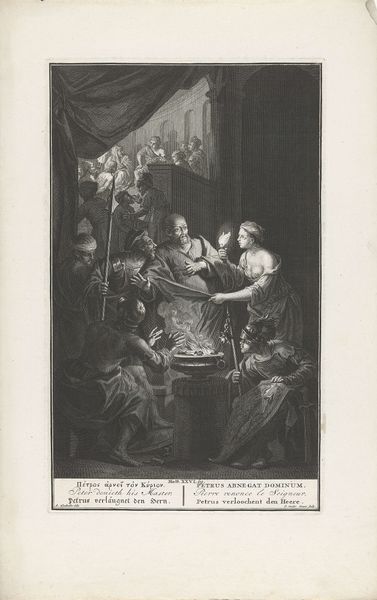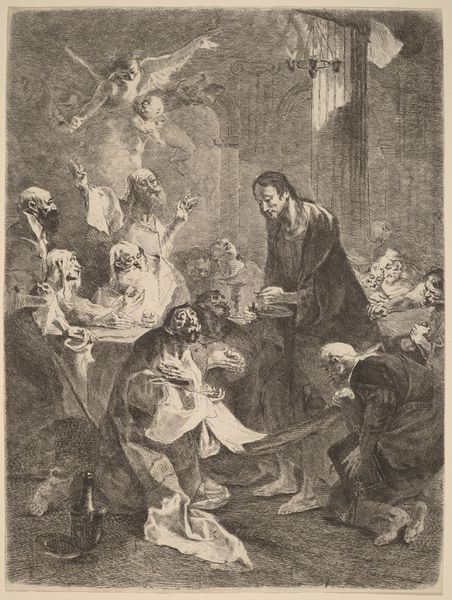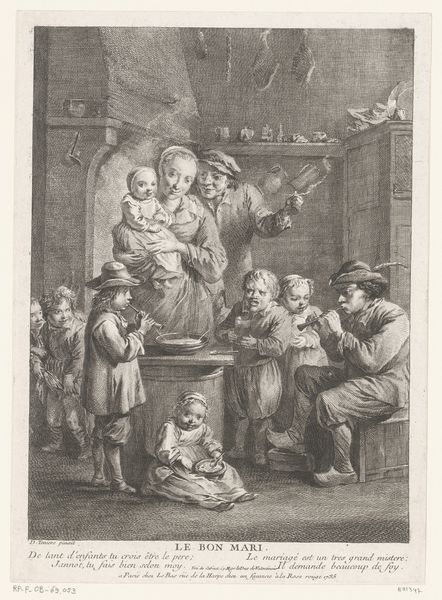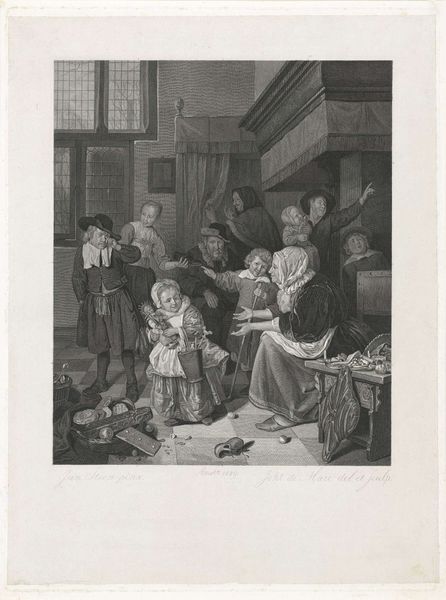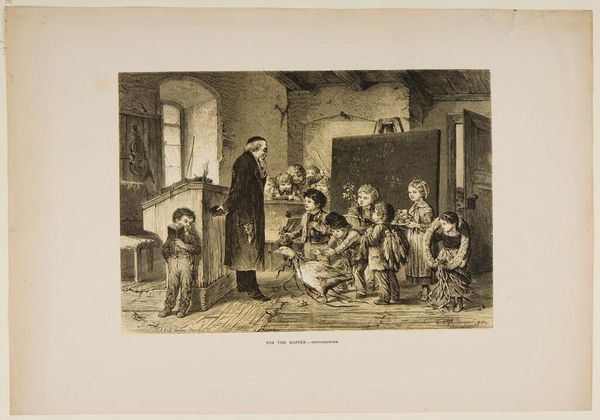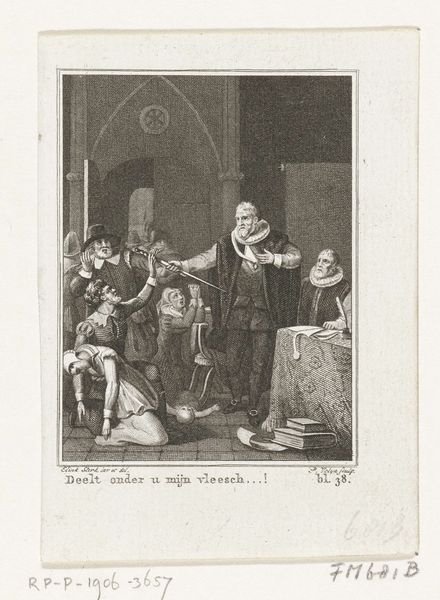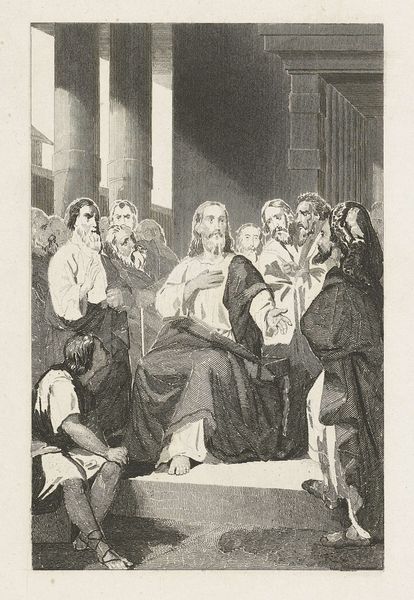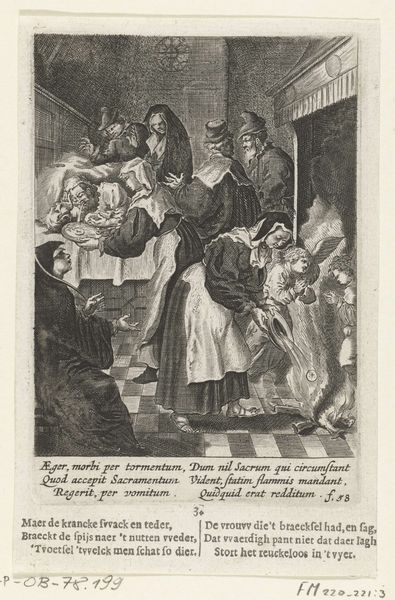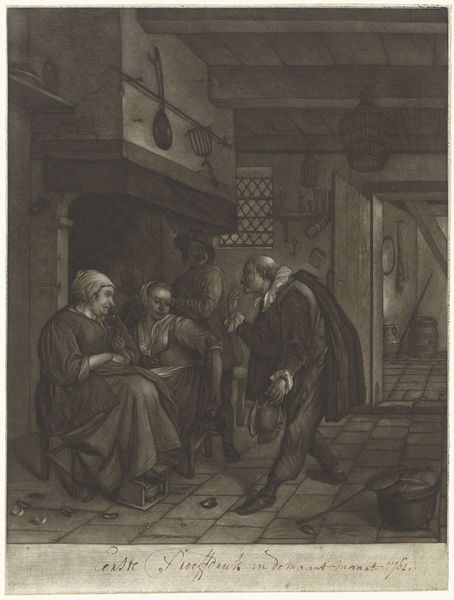
print, engraving
#
portrait
#
baroque
# print
#
old engraving style
#
genre-painting
#
engraving
Dimensions: height 535 mm, width 436 mm
Copyright: Rijks Museum: Open Domain
Curator: Welcome to the Rijksmuseum. Here we have an engraving by Jacob Folkema, active from 1702 to 1767, called "Piskijker." Editor: What a curious scene! It has this definite sense of unease. It’s so dark, filled with such strange details. Is that… someone examining urine? Curator: Precisely! This image depicts what we would today call a uromancer, inspecting a vial. Engravings like this, though reproduced on paper, were deeply embedded in a wider visual culture connected to knowledge production. Notice all of the surrounding objects. Editor: My eyes are drawn to the skull placed so prominently. A traditional symbol for “memento mori” then? A reminder of mortality. It also seems the subject is illuminated specifically, emphasizing this inspection. Curator: That's right, this act of examination is a performance. The surrounding disarray and scholarly implements, books, jars and what appears to be coins, show both accumulation of wealth and a claim to scientific endeavor. It all conveys labor. And consumption by an elite audience seeking knowledge and health advice, of course. Editor: There is indeed such rich visual texture! Look at the seated figure behind him in the scene. That sleepy, passive demeanor seems to juxtapose with our central character, who looks to be deeply engaged. Is it intentional, do you think, a comparison of engagement with worldly affairs versus contemplation? Curator: Symbolism works that way, doesn't it? By contrasting one idea against another. The meat hanging in the doorway… all those little objects each carry coded meaning of the era. Editor: So the value here exists in decoding symbols embedded in everyday practice, unveiling not only meaning, but revealing psychological or cultural patterns over time. Curator: Absolutely. Looking closely, we can begin to see these historical productions not just as aesthetic creations, but also social mirrors, actively produced and consumed in a specific cultural framework. Editor: It leaves me wondering about the reliability of this examination... and if such performances were more akin to theater than medical diagnoses. Thanks for the insight. Curator: My pleasure. Viewing the art piece through production processes always unearths multiple historical dimensions.
Comments
No comments
Be the first to comment and join the conversation on the ultimate creative platform.
